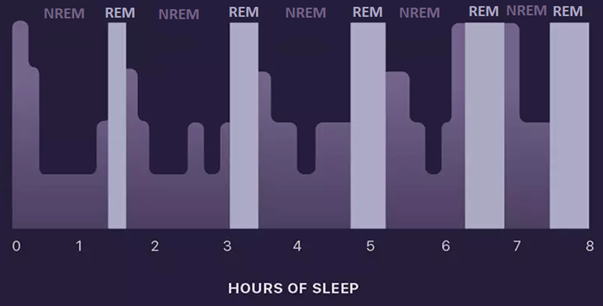Sleep
How to learn while asleep
While the lights are turned OFF, your brain is still ON
Allow me to paint you a scene. You’re 30-ish and you’ve been able to scramble together the whole shebang; Lovely partner, kids, a job, some good friends to spend your Friday evenings with, etc. All fun and games, of course, but also a bit on the busy side of things. Work takes up four and a half days, the kids are still young enough that your sleep schedule hasn’t fully recovered and trying to find time for not just your partner, but also your friends and hobbies is quite the challenge. You want to spend time on everything, but you just don’t have enough of it. Now, unfortunately, science has yet to find a way to put more hours in a day, but there might be another way to gain more time for activities, sleep-learning. No more late nights trying to work with the new mandatory software for work. No more rattling your brain, trying to fix your motorcycle engine. Instead, you can just sleep, and your subconscious does the work for you.
Today, I will tell you about three ways in which you can use sleep to learn (or unlearn) things. Firstly, I want to tell you something about learning with sound. After that I want to give you two ways in which you can use smell.
Let’s start with sound
In 2017, researchers at the Département d’Études Cognitives in Paris found something very interesting. They were trying to figure out if people can learn vocabulary while asleep. So, they put on a tape of someone saying a bunch of words. And the people could actually recognize the words!
Unfortunately, there’s a catch; Only sounds played during a certain phase of sleep could be recognized. Sleep is more or less divided into two phases: Rapid Eye Movement (REM) sleep and Not Rapid Eye Movement (NREM) sleep. REM is basically the phase of sleep where you dream and NREM the phase where you are vast asleep. Both phases take turns throughout your sleep, but NREM has a bigger role early on and REM has a bigger role at the end of your sleep. Little side note, ever wake up feeling super groggy? You probably woke up while you were in NREM sleep.

The phases of sleep. As you can see, NREM occurs more towards the beginning of sleep and REM more towards the end.
Sounds played during REM sleep could be recognized. Sounds played during NREM sleep made learning those same sounds more difficult while awake. So, you can learn new words and definitions while asleep, but you do need to be careful when you play the sounds. Since NREM sleep is mostly present during the early part of sleep you can’t just put on a podcast or video and call it a night. If you want to use this technique to learn maybe what you can do is set an alarm for roughly an hour before you normally wake up (When you are mostly in REM sleep). Then, make it play something worth learning, instead of an actual alarm. Of course, be careful not to put the sound to loud, otherwise you’ll wake up too early and less sleep is always bad for learning.
Learning with smell
Instead of sounds, you can also use smells. Smells are a very powerful tool for associating, and you can use that to your advantage. There are two ways to use smells. You can use them to enhance the learning that you did, or you can use them to change behaviour.
Let’s begin with the first. In 2020, researchers at the Institute for Frontier Areas of Psychology and Mental Health in Freiburg, Germany, tried to use smells to make people learn better. They gave students a rose that the students had to smell while studying, sleeping and while making the test. Students who used the rose while studying and during the test did better than students without the rose. But students who also used it while asleep did even better. So, if you ever need to learn something you might want to try and link it to a smell and put that smell on your nightstand as well. For example, if you are trying to figure out how to fix your motorcycle engine, maybe put something that smells distinctly garage-y next to your bed.
Another way to use smells is to change your behaviour. Say you want to quit smoking, but you just haven’t managed yet. A team of researchers at the Weizmann Institute of Science in Rehovot, Israel, actually tried looking for a way to use smells to help people quit smoking, way back in 2014. They made people smell tobacco and rotten fish at the same time. What they found was that people started associating the two smells, but only if they smelled them in their sleep. These people then smoked way less in the next few days. So, if you ever want to change something about yourself, you could consider combining some smell associated with that behaviour (like tobacco in this case) with some nasty smell and put it on your nightstand. Only downside to that, this probably isn’t very popular with the spouse.
So, what have we learned? You can use sleep to take away some of the learning you need to do every day and get more time for other activities. It seems that there are a few ways to go about it. Either by listening to what you want to learn during the proper time window or by adding a particular smell when learning something, to form an association to what you have learnt with the smell, thus making your learning more impactful.
References
Andrillo, T., Pressnitze, D., Léger, D., & Kouider, S. (2017). Formation and suppression of acoustic memories during human sleep. Nature Communications, 8(1). https://doi.org/10.1038/s41467-017-00071-z.
Arzi, A., Holtzmann, Y., Samnon, P., Eshel, N., Harel, E., & Sobel, N. (2014). Olfactory aversive conditioning during sleep reduces cigarette-smoking behavior. Journal of Neuroscience, 34(46), 15382-15393. https://doi.org/10.1523/jneurosci.2291-14.2014.
Neumann, F., Oberhauser, V., & Kornmeier, J. (2020). How odor cues help to optimize learning during sleep in a real life-setting. Scientific Reports, 10(1). https://doi.org/10.1038/s41598-020-57613-7.
Graph adjusted from https://thelifehub.com/deciphering-melatonin-dreams/.

